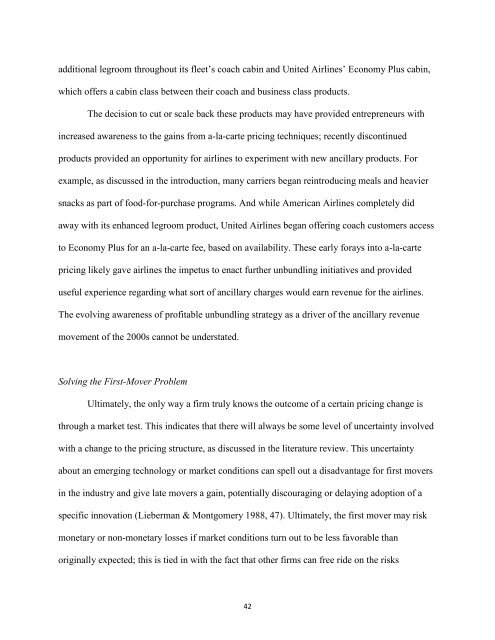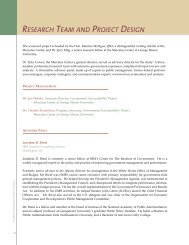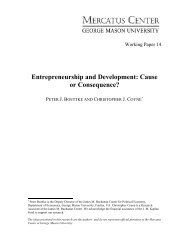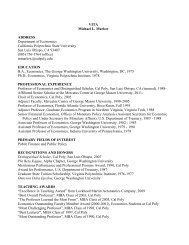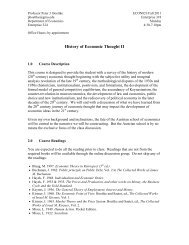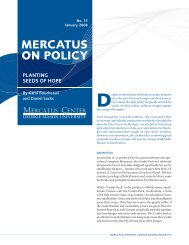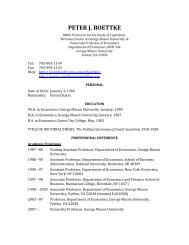A-La-Carte Pricing in the Airline Industry - Graduate Student ...
A-La-Carte Pricing in the Airline Industry - Graduate Student ...
A-La-Carte Pricing in the Airline Industry - Graduate Student ...
You also want an ePaper? Increase the reach of your titles
YUMPU automatically turns print PDFs into web optimized ePapers that Google loves.
additional legroom throughout its fleet‘s coach cab<strong>in</strong> and United Airl<strong>in</strong>es‘ Economy Plus cab<strong>in</strong>,which offers a cab<strong>in</strong> class between <strong>the</strong>ir coach and bus<strong>in</strong>ess class products.The decision to cut or scale back <strong>the</strong>se products may have provided entrepreneurs with<strong>in</strong>creased awareness to <strong>the</strong> ga<strong>in</strong>s from a-la-carte pric<strong>in</strong>g techniques; recently discont<strong>in</strong>uedproducts provided an opportunity for airl<strong>in</strong>es to experiment with new ancillary products. Forexample, as discussed <strong>in</strong> <strong>the</strong> <strong>in</strong>troduction, many carriers began re<strong>in</strong>troduc<strong>in</strong>g meals and heaviersnacks as part of food-for-purchase programs. And while American Airl<strong>in</strong>es completely didaway with its enhanced legroom product, United Airl<strong>in</strong>es began offer<strong>in</strong>g coach customers accessto Economy Plus for an a-la-carte fee, based on availability. These early forays <strong>in</strong>to a-la-cartepric<strong>in</strong>g likely gave airl<strong>in</strong>es <strong>the</strong> impetus to enact fur<strong>the</strong>r unbundl<strong>in</strong>g <strong>in</strong>itiatives and provideduseful experience regard<strong>in</strong>g what sort of ancillary charges would earn revenue for <strong>the</strong> airl<strong>in</strong>es.The evolv<strong>in</strong>g awareness of profitable unbundl<strong>in</strong>g strategy as a driver of <strong>the</strong> ancillary revenuemovement of <strong>the</strong> 2000s cannot be understated.Solv<strong>in</strong>g <strong>the</strong> First-Mover ProblemUltimately, <strong>the</strong> only way a firm truly knows <strong>the</strong> outcome of a certa<strong>in</strong> pric<strong>in</strong>g change isthrough a market test. This <strong>in</strong>dicates that <strong>the</strong>re will always be some level of uncerta<strong>in</strong>ty <strong>in</strong>volvedwith a change to <strong>the</strong> pric<strong>in</strong>g structure, as discussed <strong>in</strong> <strong>the</strong> literature review. This uncerta<strong>in</strong>tyabout an emerg<strong>in</strong>g technology or market conditions can spell out a disadvantage for first movers<strong>in</strong> <strong>the</strong> <strong>in</strong>dustry and give late movers a ga<strong>in</strong>, potentially discourag<strong>in</strong>g or delay<strong>in</strong>g adoption of aspecific <strong>in</strong>novation (Lieberman & Montgomery 1988, 47). Ultimately, <strong>the</strong> first mover may riskmonetary or non-monetary losses if market conditions turn out to be less favorable thanorig<strong>in</strong>ally expected; this is tied <strong>in</strong> with <strong>the</strong> fact that o<strong>the</strong>r firms can free ride on <strong>the</strong> risks42


